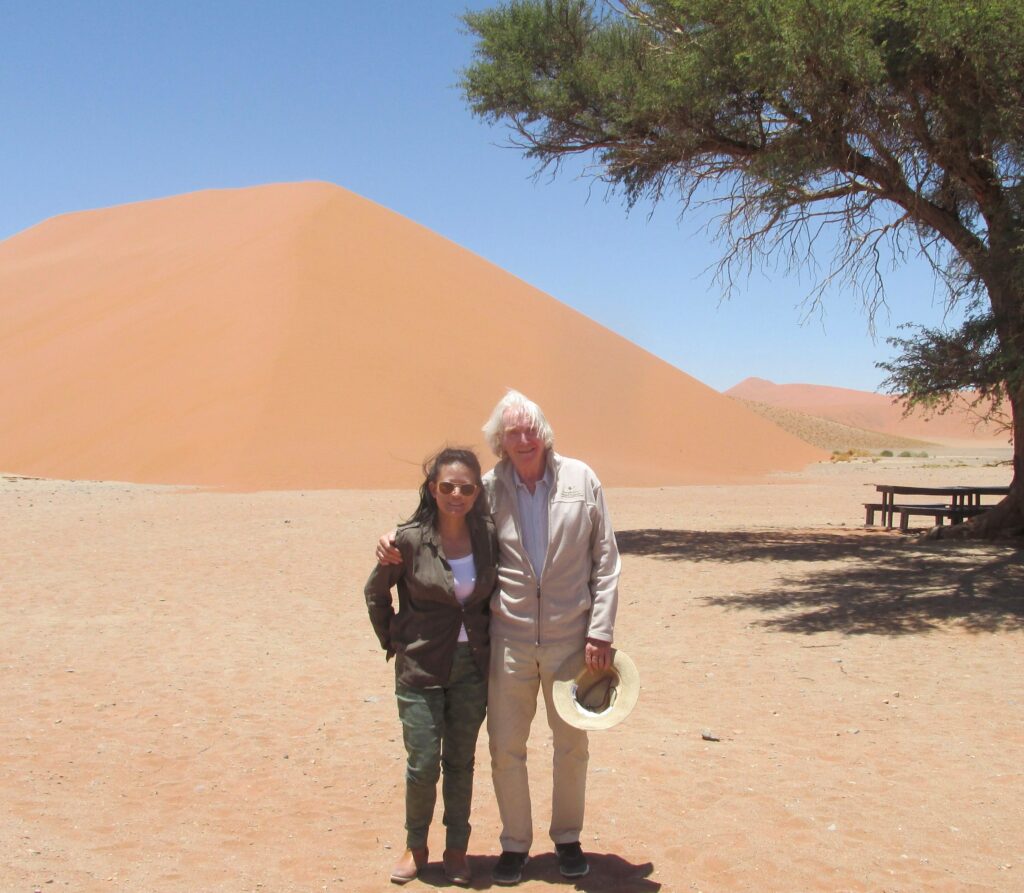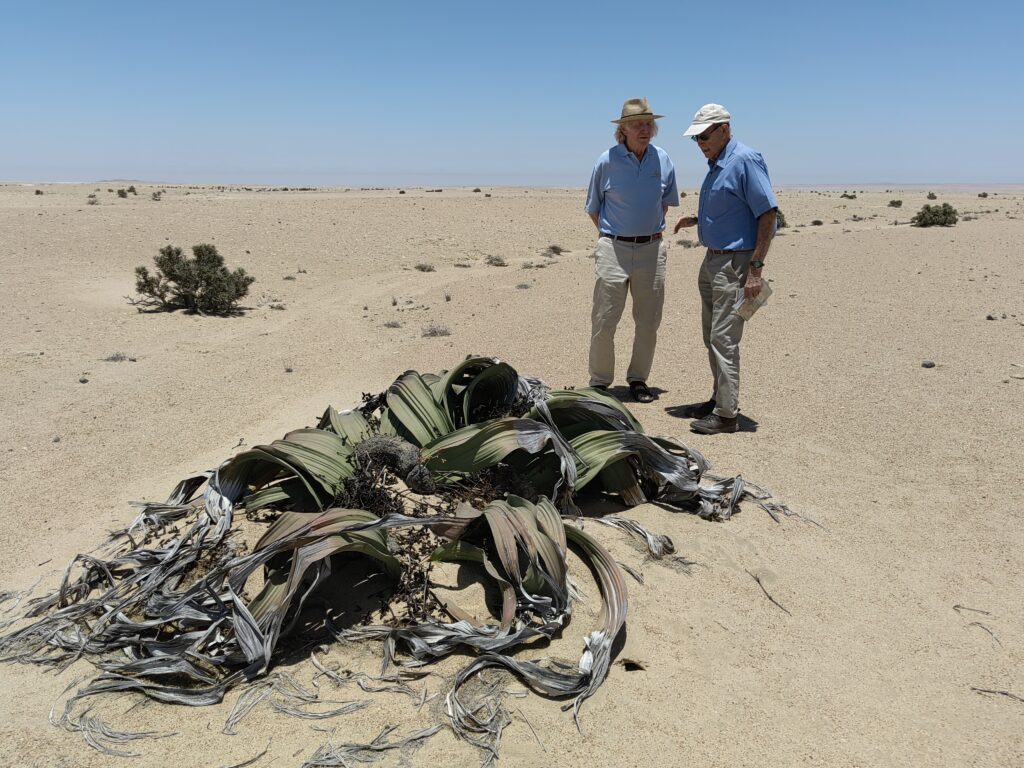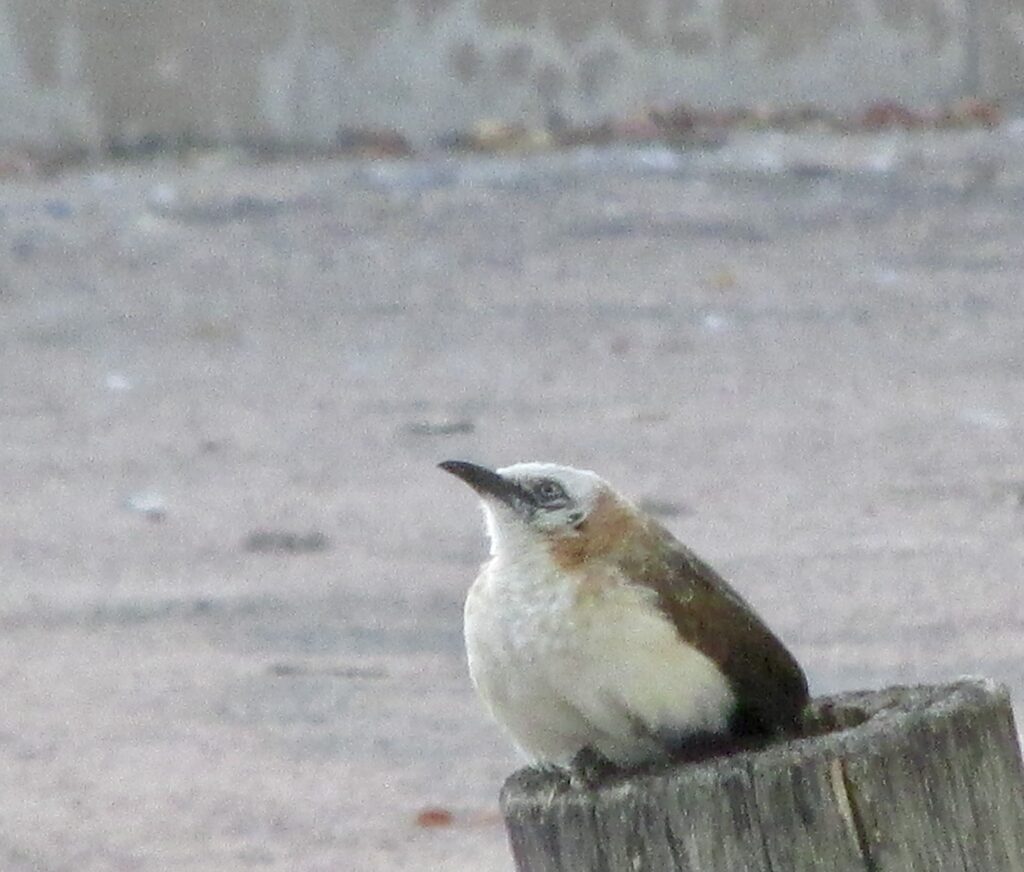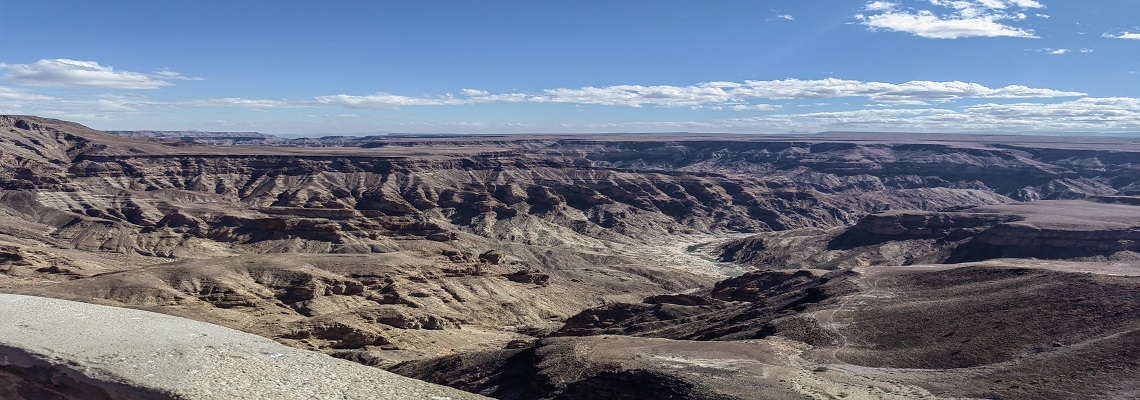Namib
Namibia is wonder-filled. We drove from bottom to top, Fish River Canyon to Etosha to Caprivi Strip.
Add Sossusvlei and Swakop for the country’s ‘Big Five.’ Did it my way, as Sinatra used to sing, and made mistakes, more than a few.

So, here’s our story.
I drove nine hours from Johannesburg to Upington (partner, Melanie, flew) where we stayed a night in the delight filled Le Must guesthouse, right on the Orange River.
The next day we drove six hours across border to Fish River Canyon, one of Namibia’s grandest sights. Deep, long, rocky, extraordinary canyon carved out of the desert, second only to Nevada’s Grand Canyon. Slightly rocky road there. After seeing the great groove in the earth we had a roughish two-hour ride on gravelly, rocky, sandy road to our first accommodation, Alte Kalkoven, farm-style chalets.
Of course I ignored Melanie’s advice to rather hire a 4X4 with two spare wheels. My 10-year-old Hyundai iX35 will be fine, I assured all who offered advice, specially my sceptical partner.
A gnawing fear of foolhardy drivers like me in ordinary cars on Namibia’s gravelly roads, is two punctures. “But what if we get two punctures?” This a constant refrain from my partner, who wanted me to hire the 4X4 to show her the country. “Don’t worry,” said I, “I’m a boykie from the Free State. We ‘maak n plan.’
As we hit the first dirt road — a good one — a little butterfly-of-concern unfolded its wings in my tummy. What if we do have two flat tyres?
Alte Kalköfen is a farm with two old lime kilns. We arrived before dark, had a wonderful welcome, good three-course meal, beautiful room, view of a waterhole, Oryx, Springbok and Black-backed Jackals visited while we watched. The waterhole is lit at night by a light powered by solar panels.
On day two we drove 100km (on tar) to Keetmanshoop to see the Quiver Tree Forest (impressive) and Giant’s Playground (not so impressive). Bad 20km of dirt road to get to the two.
A mixed grill to share for lunch at Keetmanshoop’s Central Lodge, where talkative George-the-Manager regaled us with tales of his time as Namibia’s consul in Johannesburg — and warned us about the road to Sossusvlei and Sesriem awaiting us the next day.
Just before going into the dining room for a light supper, my partner said “come look at the car.” A puncture. Back wheel on driver’s side. And oh no, on the passenger side, a slow puncture. Two flats. Soon after 7am the next day, day three, Edward presented himself. To fix punctures, he said. Which he did. I set off with a cheery heart that Sunday morning, back to having five good wheels. Ten minutes from the farm Edward’s fix unfixed. My slow puncture was now a very flat tyre, on which I had driven, making it an unrepairable bad tyre. My partner and I changed wheels in the sun at the roadside, a first for her. Now I had five hours on dirt with no spare.
At the next small town I asked for help at the garage. Sorry, on Sunday puncture man not here. A friendly farmer, Leslie, sensing my panic, said his farm was 30km on the road to Sossus, Barby’s Guest Farm, pull in and he’ll repair the puncture, just wait there as he has shopping to do. We both spoke Afrikaans to each other and laughed to discover we were both English-speaking. He fixed the puncture at his farm but when the tyre inflated the walls bulged.
So to the longest four-hour white-knuckle drive of my life on a bad dirt road, worse near Sossus, tummy churning. What if I now have just one puncture. What can we do? No cell reception.

If you are not the worrying kind, the drive is beautiful, spectacular even, all along and through a Nature Reserve. Saw Springbok, Oryx, signs warning of Giraffe but didn’t see those. Fantastic stony hills dot lush flatlands which change colour from yellow to brown to black to grey to red dune dust.
Desert Quiver is a pretty camp. But nowhere near as pretty, to me, as the nearby garage, advertising “We solve all tyre problems!”
Scenery in Namibia is unusual, mountains of brown boulders that look fused together, fields of small black stones, yellow melons like tennis balls in hundreds alongside a grey schist road, big black stone hills, verdant veld, dusty dunes, red sand dunes, dry river beds, steep cliffs of impenetrable rock, curiously flat field of nothing that stretch to the horizon. And it changes, shadows move with the sun, clouds roll by, the wind colours things khaki. Highly recommend Desert Quiver Camp at Sesriem, just outside the Sossusvlei park. Fabulous accommodation. Pleasant pool, friendly outdoor bar, good service, easy order of braai meat or chicken, they supply implements, wood, firelighters.
Another four-hour trip on dirt on day five to Swakopmund, via Walvis Bay, where hooray! Trentyre has a new tyre for me.

A friend’s parents, Egon and Freda Alfeld, came for our first dinner in Swakop. A young 88-year-old, Egon proved to be the best guide we had all trip. Day six he took us around Swakop explaining its history and buildings, then to the salt works with a thousand Flamingoes, followed by a drive to the moon landscape, the extraordinary Welwitchias plants and more. A repository of ancient wisdom, he is a lovely man.
Stayed three nights at Swakopmund Sands Hotel, three-star, very ordinary. Better to stay at the Strand or Hansa heritage hotels.
A boat tour on day seven, drove through an avenue of a thousand palm trees back to Walvis to do it, joined a score of tourists of all colours on Laramon Tours’ catamaran with twin 200 outboards. Good trip – saw dolphins, a sunfish, a pelican, a seal surfing our wake, another 50,000 seals sunning themselves and playing in the water. Lotsa cute seal pups gambolling.
The exchange of very hot air and colder clouds creates interesting wind patterns, and mist comes across the land like a blanket. Each day seems different and brings something new. In a vast desert plain we are shown by Egon why the sand does not blow away: its grains have been colonized by billions of almost imperceptible green lichens.
From Swakop on day eight we drove five hours on tar to Eldorado Lodge just outside Etosha National Park. I figured to stay a night outside so you get the full day in the park when you enter. Into Etosha the next morning on day nine. In first five minutes’ drive, saw two superb lionesses, sheltering under a bridge.
Booked into Halali’s ‘honeymoon suite’ chalet, lovely big bedroom and bathroom plus a jacuzzi, but sadly not self-catering. On our evening drive from Halali saw Springbok everywhere, a White Rhino, one lonely Lesser Flamingo at the waterhole. It rained a drenching shower, and we watched a Secretary Bird stride through the rain in the veld. Saw our first Black-faced Impala and ticked a Greater Falcon. Thunderous skyscape streaked by sun.

Morning drive on day ten ticked various Korhaans, Ludwig’s Bustard, Black rhino, Giraffes and Bare-Cheeked Babbler, the last a ‘lifer’ for me. The black rhino was special, standing proud in the middle of the road, almost challenging us. He trotted off into the bush with a snort. We were clearly not worth worrying about.
The off-roads in Etosha are atrocious. Anxiety butterflies came back with a vengeance. Roads to both nearby waterholes were so bad they made me angry. And anxious. What if we have two ..?
That evening we walked to the camp’s waterhole, Moringa. A small herd of six elephants arrived, slurped up water, played and sprayed before strolling away. Perfect end to the day.

Every drive in Etosha produced something special. A fox, a lion, a rhino. The next day’s drive from Halali to Namutoni inside Etosha was our best yet — huge herds of Springbok, hundreds of Zebra, a real big dazzle of ‘em, big flock of Flamingoes and a large herd of Blue Wildebeest with the odd Oryx thrown in, all in one place. Superb sight. Difficult to adequately describe. So much game. The park has 40,000 Zebras.
In the afternoon we drove to King Nehale Hotel outside the park just to see the new hotel. Within five minutes of getting on the road, spied three cheetah, under a tree, skin shiny white with designer black dots. They looked fashionable, gave us much satisfaction seeing them.
From Etosha the next day drove six hours (all on tar) to White Sands resort at Popo Falls in Divundla on the Kavango River bank. Beautiful. Private chalet. Popa Falls right outside, soothing sound of rapids puts you to sleep at night. Just chilled in the bush for two days. Marvellous. We then left this lovely country of only 2.6 million people, friendly people, its people one of the country’s unheralded greatest attractions. It is physically three times the size of the UK.
Final two nights of the trip were in Kasane, Botswana, a country of only 2.4 million people, wealthier and with a different attitude. To get there we drove through Namibia’s Caprivi strip and Botswana’s Chobe Game Reserve. In Kasane we stayed at Tlou. Okay, but try Ouma de Plekkie instead, or Kasane Self-catering. Final boat trip on the river, fabulous, saw elephants swimming and three lions basking on the river bank in the sun.
With our limited time we skipped Windhoek and the Skeleton Coast. Our five big sights: Canyon, Sossusvlei, Swakop, Etosha, Kavango River.
In this wonder-filled desert country we had a wonderful time. The people, the places, the experiences are treasures in our memories.
Click on the images to enlarge.

